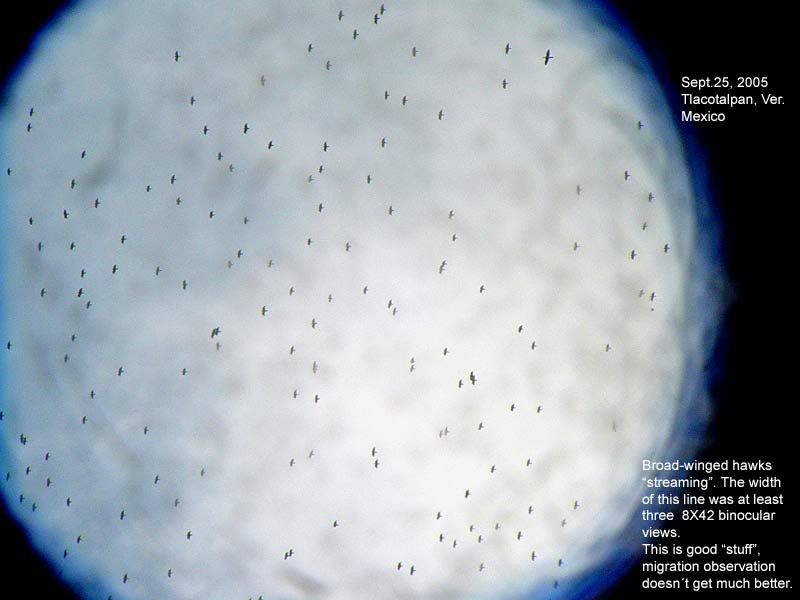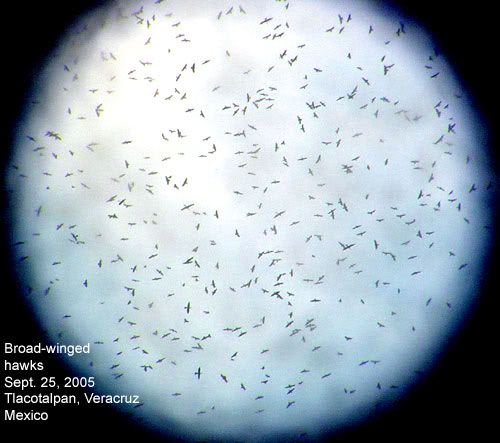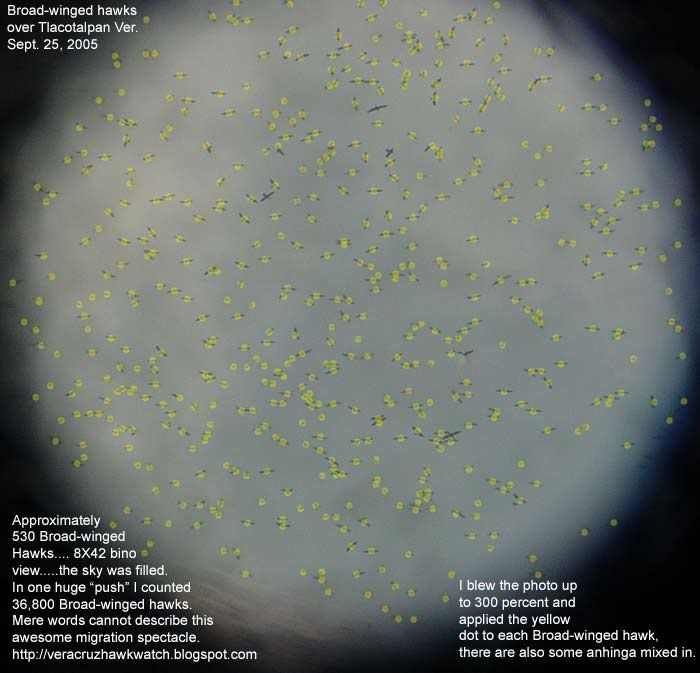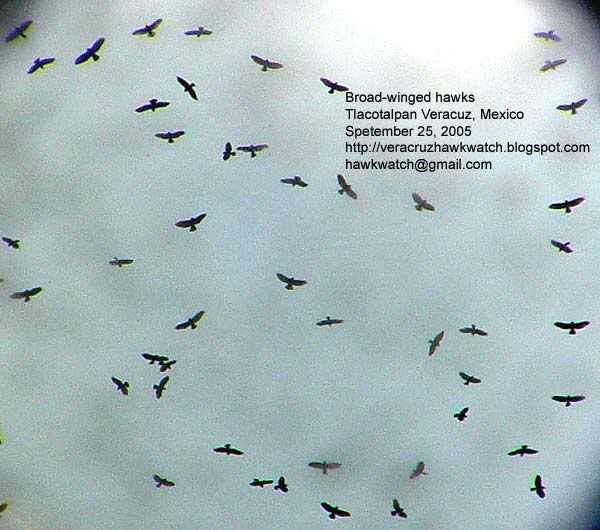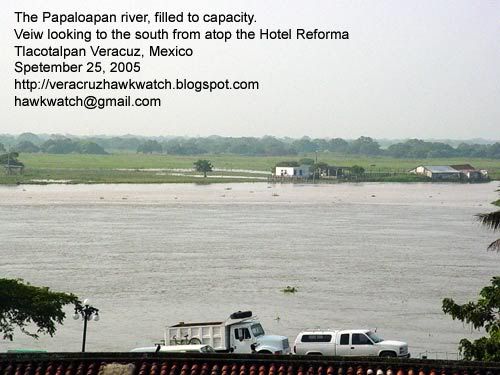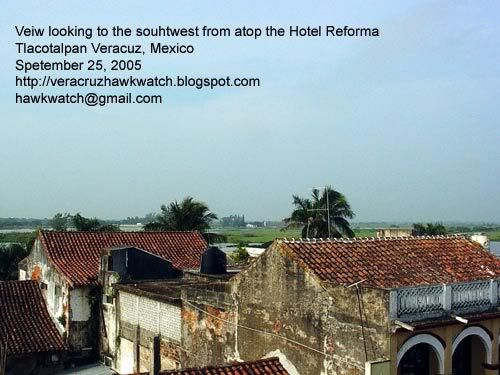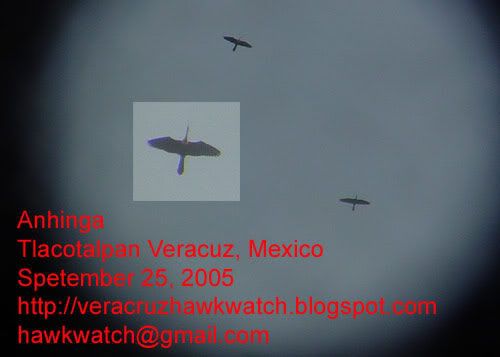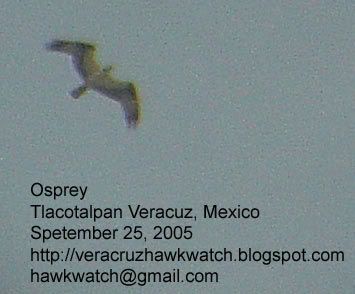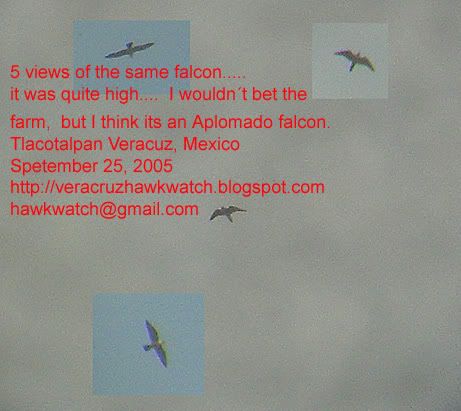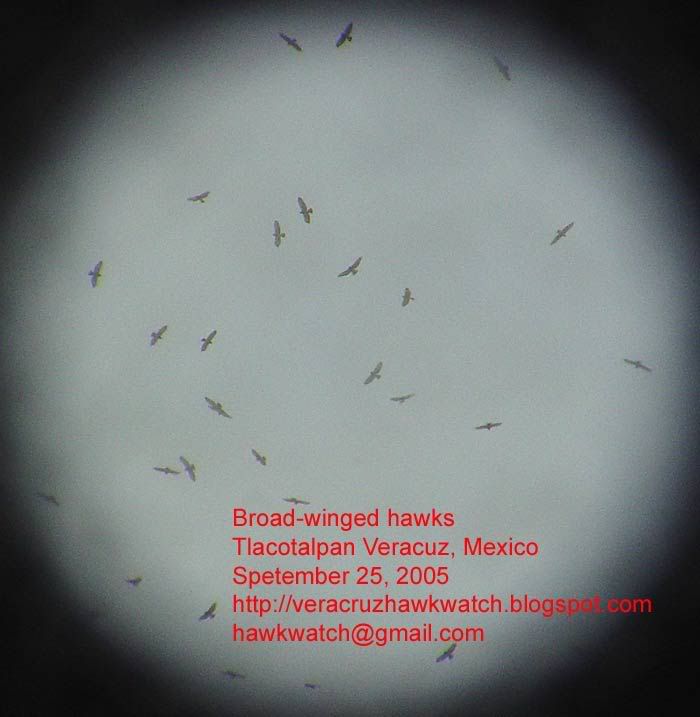I have picked three dates this year to observe raptor migrations here in Veracruz Mexico.
The dates are:
September 25-October 2 (**874,287)
October 3-10 (**1,570,119)
October 11-18 (**1,385,214)
(**The number of migrating raptors counted last year during these dates.)
I am trying something new this year. The focus of each tour is the MIGRATING RAPTORS. I am limiting the size of each group to six (6) birders.
We will do a 2.5 to 3 hours of general birding each morning.
Every afternoon will be dedicated to observation of the raptor migration.
The raptor migrations of Veracruz are unique in that the represent the most concentrated movements of migratory birds of prey to be found on the planet!
Each fall between 5-6.5 MILLION raptors are counted during the migration season.
If you have never seen it, you are missing one of natures greatest spectacles.
Most tours that come to Veracruz in the fall spend a good deal of time visiting other birding sites in Veracruz and the emphasis on raptors is only limited to two or three days at the most. It is easy to miss a "big day" or a heavy push of raptors if you are not focused on the hawkwatch.
In my tour this year we will spend the afternoons, in shaded areas, in chairs with plenty of cold drinks on hand.
Each day is a show. From the locations that I have selected you will have vantage points that few birders in the world have ever witnessed of this incredible migration.
This trip is not about "listing", it is good solid "hawwatch".
The amount of walking and light hiking is limited to the few hours of morning birding.
The rest of the day is to relax and enjoy the migration.
The cost of the 7 night-8 day trip is $1,400 US dollars (based on double occupancy)
add $200 US dollars if you are travelling alone and desire a single room.
This price includes meeting and returning you to the airport in Veracruz, ground transportation, lodging, meals and guide fees.
The trip is based in Paso de Ovejas Veracruz and is situated strategically in the center of the raptor migration flow.
Lodging:
The hotel is clean and has air conditioning. There is also a nice observation deck and swimming pool at the hotel. (in past years birders have enjoyed the hawk migrations from the comfort of the pool at the hotel!)
Food:
Doña Isabel is the cook for the group and she whips up some excellent mexican dishes (all spicy seasonings are on the side) Dinners include beer, red wine or margaritas. Good food is important to me and we make it a focus of the tour.
This is not a fancy luxury tour...I use the restaurant, hotel, taxis and people of the community to help make this tour work. This is community ecology based tourism in action.This is an opportunity to have some real FUN while seeing thousands and thousands of migrating raptors.
My name is David McCauley. I have lived in Veracruz for many years. I am a nature photographer. I am concerned about bird conservation and education projects here in Mexico.
Your participation in these tours will benefit these efforts of mine.
I hope that if you choose to participate in these groups that you will consider it a cultural exchange. Bring a good attitude and it will be reflected back to you many times.
This is a great opportunity to share your knowledge of birds of prey with others, or learn in an environment that is negative attitude free.
If you have more questions please send me an e-mail.:
hawkwatch@gmail.com
I look forward to hearing from you and will be most happy to help you with your trip preparations.
Good birding,
David McCauley
I was headed out to the market, it had just rained alot. Steps from my front door (on the ground) I came upon this immature Northern Jacana. It was a tangle of wet feathers and legs...at first I thought that it was dead, but as I crouched closer and picked it up it moved. Very weak I took the bird into the house and gave it a superficial check, no broken wings, legs or neck.
It could not stand on its own, its eyes were open. I dried it off a bit, wrapped it gently in an old dry sock, that seemed to soothe the bird a bit.
I sent the neighbor kid out to the marsh to get some small minnows.
I was able to feed it about 15 small minnows.
After four hours in the house, I noted that it could stand on its own.
Taking advantage of the daylight, I took the Jacana to the edge of the marsh and released it in the shade some 2 meters from the edge of the marsh. I watched it for a while, it seemed to be alert and was taking a few steps.
I left it there with the hope that it would fit in to it´s new surroundings. Jacana young are precocial (able to move about and feed soon after hatching),
this individual I estimate to be 8 to 9 months old.
The mystery is how it got into town, in 8 years I have yet to see a Northern Jacana in flight over the town.
Good birding,
David McCauley
I was able get some closeup pics of this bird,
click on the thumbnail pics below to see the larger image.
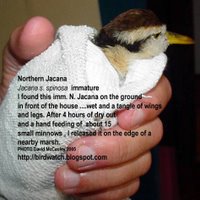



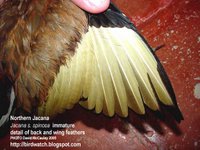


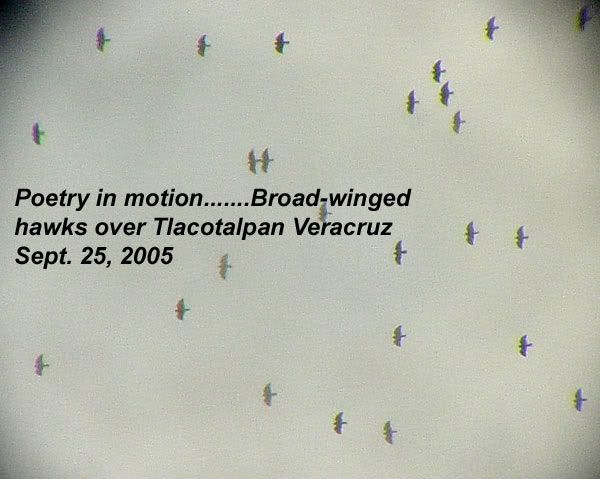
Raptors in flight......poetry in motion.
Today was one of those days that I live for.
Over the past six years the last weeks of September and the first two weeks of October I travel to the northwest of the Port of Veracruz to Cardel/Chichicaxtle and Paso de Ovejas to observe the raptor migrations.
This year I decided to stay put here in Tlacotalpan and surrounding areas (55 miles to the south of Veracruz) and see if I could sort out the hawk migration as it passes through the vast tropical wetlands of central Veracruz.
For the past 20 days I have been going different spots along the the road between Tlacotalpan and Cosamaloapan (see map)
Up until Sunday Sept. 25th, I have made observations at 5 different locations and the results have been rather lackluster (by Veracruz standards). I did see nice movements of Mississippi Kites and the beginnings of the Broad-winged migration.
On saturday I was here in Tlacotalpan and not able to get out for the observation.
Saturday evening a friend here asked me if I had seen the hawks that came by. I started to ask some questions and he told me that he had seen several large groups come by. My curiosity was piqued.
I got up early on Sunday and decided to spend the bulk of the day observing right here in Tlacotalpan.
I walk 2 blocks from my house to the Hotel Reforma and walk up 4 flights of stairs to the rooftop. Here are some views View 1 View2 View3 View4
My first raptor sighting of the day was a resident Bat falcon perched on the radio atena atop the municipal building.

I watched with a keen fascination as the Bat falcon flew out from its perch 5 times in search of food. The bat falcons aerial abilities are awesome!
I expected to see the bat falcon come back with a swallow, to my surprise with each return to the perch it had captured a dragonfly. I knew that dragonflies were the mainstay for Missippi Kites but I had never seen a bat falcon "chow down" on dragonflies before.
I got settled down in my plastic chair (in the only patch of shade that I could find on the rooftop) and I scanned the sky from 9a.m. until 12:30.
I saw some small groups of "early lift" Broad-winged hawks in addition, groups of migrating anhinga, a Zone-tailed hawk, 10 Osprey, a resident Aplomado falcon, and several Lesser, Yellow-headed Savannah vultures (residents), a high flying female Snail kite and 1 White-tailed Kite.
From 9am until 12:30 p.m., I observed around 300 migrating raptors (274 BW)
At 12:30 I left the (then shadeless rooftop of the hotel) and headed two blocks away to my house located in front of plaza Doña Marta,
(for those of you who follow my ramblings here on the weblog, you will recognize Plaza Doña Marta as the home for my spring hawkwatch (114,000+ counted this year during the month of April)
OK, I rush home (I always rush when there are raptors in movement .....LOL!) get my self a nice cold coke and hunker down in the shade of that big tree you see in the photo of Plaza Doña Marta.
At approximately 12:55 I come across a forming "kettle" of Broad-winged hawks, I do a quick scan and see that this forming "kettle" is being fed by a massive line of Broad-winged hawks with a few Anhinga thrown in. The "kettle" that I had just spotted swells into a swirling mass of Broad-winged hawks!
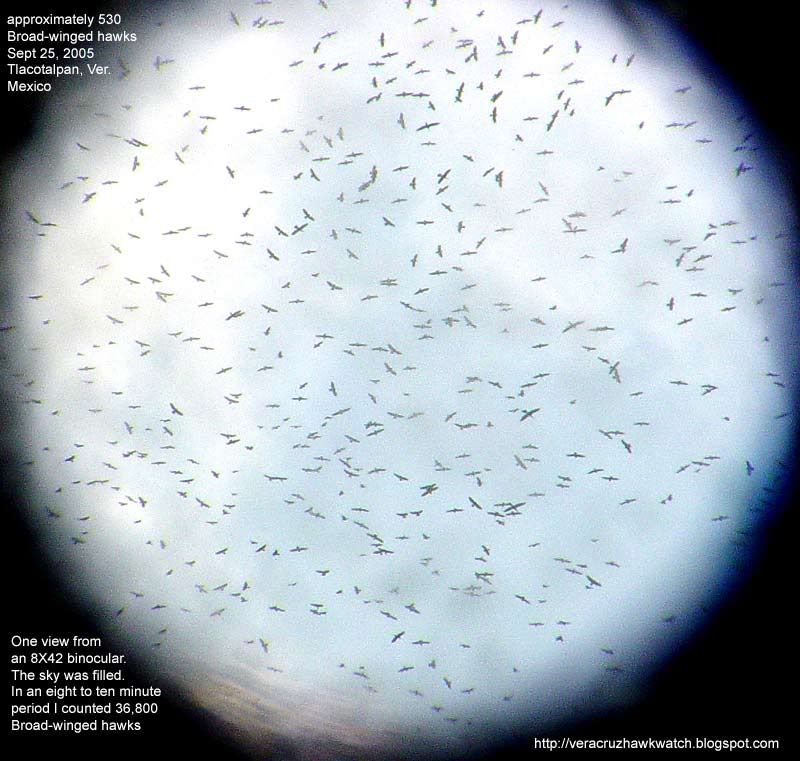
In order to count the hawks in the field of view of my binocular I put the image in Photshop and blow it up 300 percent there I place a yellow dot on each hawk. SEE PHOTO**Note on the photos: most of the above photos where taken using a technique called "binoscoping" I hand hold my digital camera (Sony Mavica 250CD to the eyepiece of my 8X42 binocular) its not an easy trick , and the results are far from crystal clear, but it gives you and idea as to what I am seeing.
Over the next 10 minutes, I count 36,800 Broad-winged hawks. (For those of you with some counting experience, the breadth (wingtip to wingtip) of the "line" or "stream" as the leave the "kettle" ranged from 20 to 200, I estimated an average of 75 to be on the conservative side. I registered 492 clicks in an 8 to 10 min. period.
491 X 75 = 36,825 This first big push (36,800+) was followed by four smaller "pushes" (10,338 -- 9,700--1,250--600), 58,688 raptors counted between 12:55 p.m and 14:00 !
Here is a summary of my observations for the day:
9:00a.m to 15:30 observation time
Broad-winged hawks....58, 962
Swainson´s hawks......2
Mississippi kites....6
Osprey ....10
Turkey Vultures.......14
Cooper´s hawk......3
Sharp-shinned hawk.....2
Merlin.......1
Peregrine falcon......2
American kestrel.....1
Northern harrier....1
Zone-tailed hawk....1
Total .......59,005
Well, thats it for the moment, I hope that I was able to communicate adequeately some of the hawkwatch from Tlacotalpan.
I want to add a special note of appreciation to Patty Waites Beasley and Crew of the Corpus Cristi hawkwatch....I appreciate all of your time and efforts..you are my closest point of reference as to migrations from up north. I am glad to hear that you escaped hurricane Rita. Its a bummer that your festival had to be cancelled.
Keep up the good work and eyes to the sky!
And to Libby and Brock....Plaza Doña Marta says "Hi"
Veracruz Fall 2005 Raptor Migrations - Info- Dates
Published Friday, May 06, 2005 by Unknown.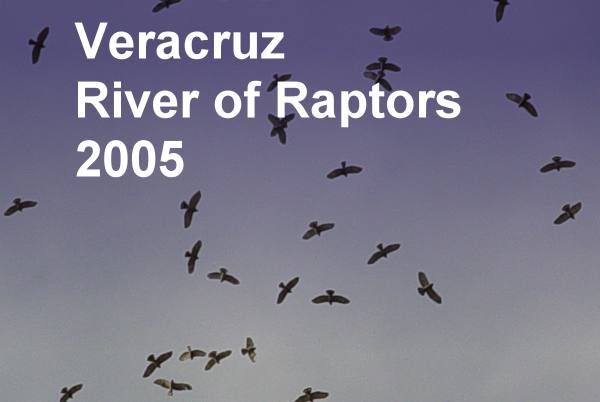
August 15th the official count for River of Raptors begins here in Veracruz......I still have openings for my 2005 River of Raptors tours, you can contact me at veracruz.hawkwatch@gmail.com
to reserve your space.
There is an outline of the tour below;
Dates and information on the Fall 2005 Raptor Migrations.
Greetings Birders:
I have set three dates for the 2005 Fall Raptor Migrations
here in Veracruz.
Sept. 26 - October 3
(In 2004 1,156,036 migrating raptors were counted during these dates)
October 4 - 11
(In 2004 1,123,203 migrating raptors were counted during these dates)
October 12 - 19
(In 2004 1,556,772 migrating raptors were counted during these dates)
The combined total of migrating raptors counted last year, for the three dates thatI have selected was ...........3,836,011
Let me give you the basics of my fall Hawkwatch/Birding Tour:
8 Day/Seven Night Tour
$1,200 US dollars per person (based on double occupancy)
Add $200 USD for Single supplement.
The tour cost includes lodging, meals, ground transportation, trip to the mangroves and visit to the Museum of Anthropology in Xalapa.
Activities:
We will go birding in the mornings and the afternoons will be spent observing the raptor migrations. (You may expect to observe between 150 to 200+ bird species during your trip.)
For more information please contact me:
David McCauley
Birding Veracruz
veracruz.hawkwatch@gmail.com
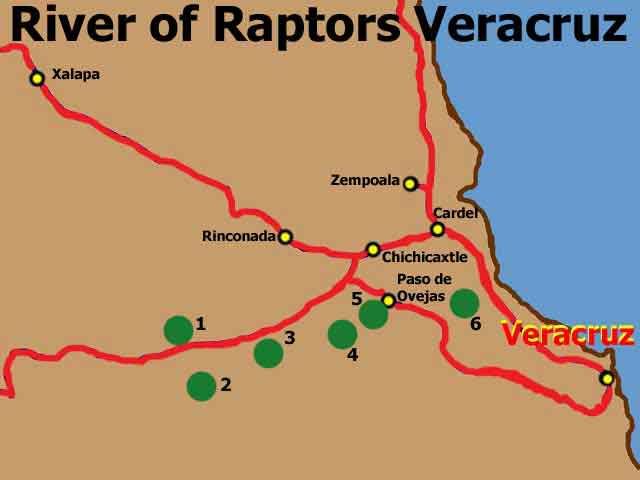
A map of the area of "River of Raptors" The three Birding/Hawkwatch trips that I have organized this year will be based in Paso de Ovejas, Veracruz.
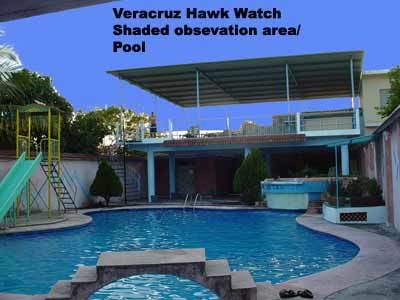
Observe migrating raptors from the shaded elevated deck. The pool below provides a nice break from the heat.


One of the thrills of the Veracruz River of Raptors is to observe the sheer numbers of migrating raptors. The geographical features of central Veracruz create a "funnel-like" concentration of southward bound birds of prey. Central Veracruz provides the highest concentrations of migrating raptors to be found on the entire planet.

The grace in flight of the Mississippi Kite is an awesome sight. In 2004 the season tally for Mississippi Kites was 177,088
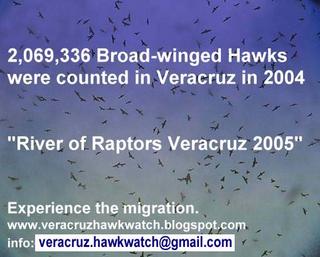
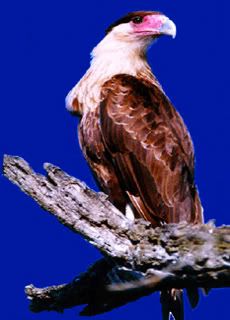

In the distance, the town of Paso de Ovejas. The town is situated in a low valley like setting near the Atiylac River. I have scouted locations to observe raptors on the high ridges to the north and south of the town

I have selected several locations on the ridges which provide spectacular panoramic views (with shade). This view facing to the north provides a "front row seat" to amazing "kettles" and "streams" of migrating raptors.

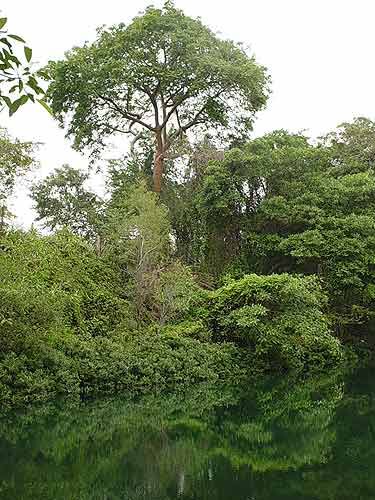
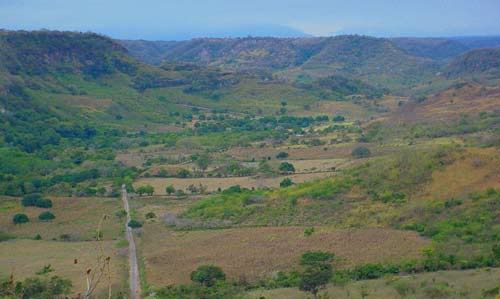
Science - Reuters
By Patricia Reaney
LONDON (Reuters) - A team of international scientists launched an ambitious project on Thursday to genetically identify, or provide a barcode for, every plant and animal species on the planet.
By taking a snippet of DNA from all the known species on Earth and linking them to photographs, descriptions and scientific information, the researchers plan to build the largest database of its kind.
'We have discovered that it is quite possible to have a short DNA sequence that can characterize just about every form of life on the planet,' Dr Richard Lane, director of science at the Natural History Museum in London, told a news conference.
Less than a fifth of the Earth's estimated 10 million species of plants and animals have been named. Researchers working on the Barcode of Life Initiative hope that genetically identifying all of them in a standardized way on a global scale will speed up the discovery of new ones.
Current techniques used to identify minute differences between species are complicated, time consuming and require specialist knowledge.
'What we are looking at is a new method which will allow just about anyone, in any part of the world, to recognize organisms without recourse to a particular specialist,' said Lane.
SCIENTIFIC TOOL
The initiative was launched at the International Conference for the Barcoding of Life in London by a consortium of museums, zoos, government agencies and organizations around the globe that study biodiversity.
'Our mission is to develop DNA barcoding as a scientific tool for rapid identification of species and to put that tool to"
About me
- I'm Unknown
- From
- My profile
Last posts
- VERACRUZ RAPTOR MIGRATION 2006I have picked three...
- Greetings Birders:Wishing all a happy holiday seas...
- My encounter with a Northern Jacana Jacana s. spin...
- Raptors in flight......poetry in motion.Today was ...
- Veracruz Fall 2005 Raptor Migrations - Info- Dates
- Yahoo! News - Genetic Barcodes Will Identify World...
- A big thanks to hawkwatch volunteers world wide! ...
- Birding Babylon Here is a link to a weblog from on...
- These tyrant flycatchers like it spicy! The other ...
Archives
- 08/01/2003 - 09/01/2003
- 09/01/2003 - 10/01/2003
- 01/01/2004 - 02/01/2004
- 02/01/2004 - 03/01/2004
- 05/01/2004 - 06/01/2004
- 06/01/2004 - 07/01/2004
- 07/01/2004 - 08/01/2004
- 08/01/2004 - 09/01/2004
- 01/01/2005 - 02/01/2005
- 02/01/2005 - 03/01/2005
- 05/01/2005 - 06/01/2005
- 09/01/2005 - 10/01/2005
- 10/01/2005 - 11/01/2005
- 12/01/2005 - 01/01/2006
- 08/01/2006 - 09/01/2006

